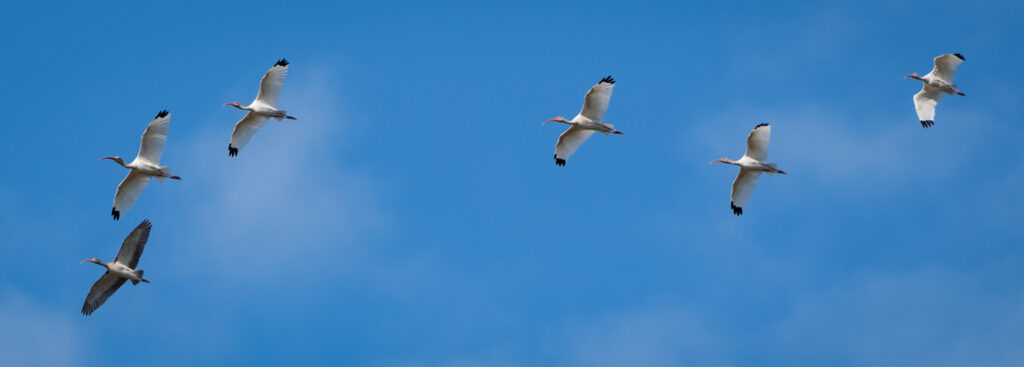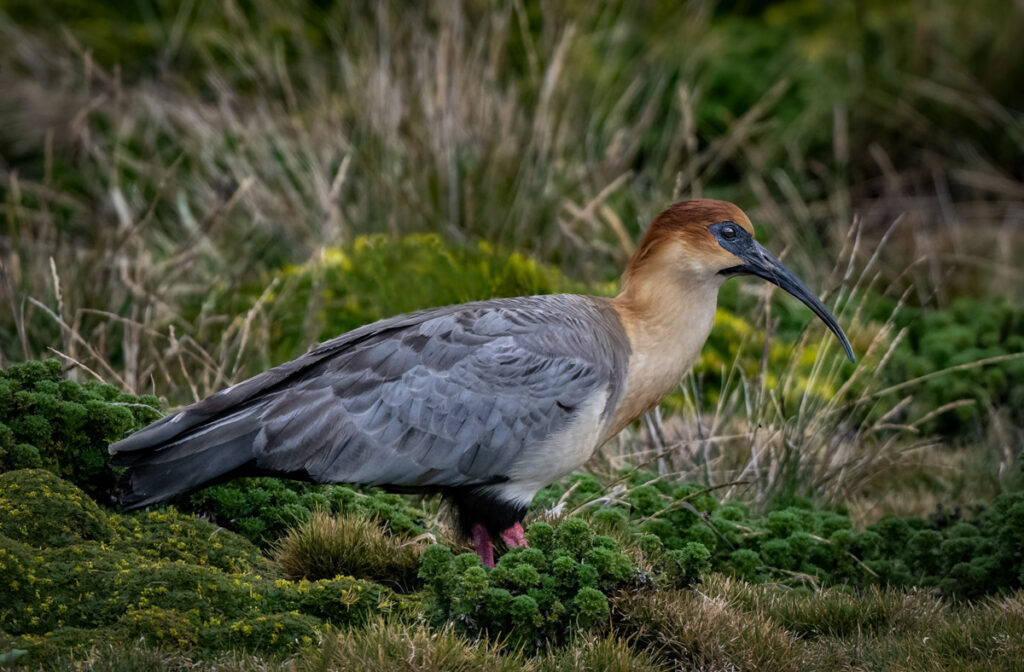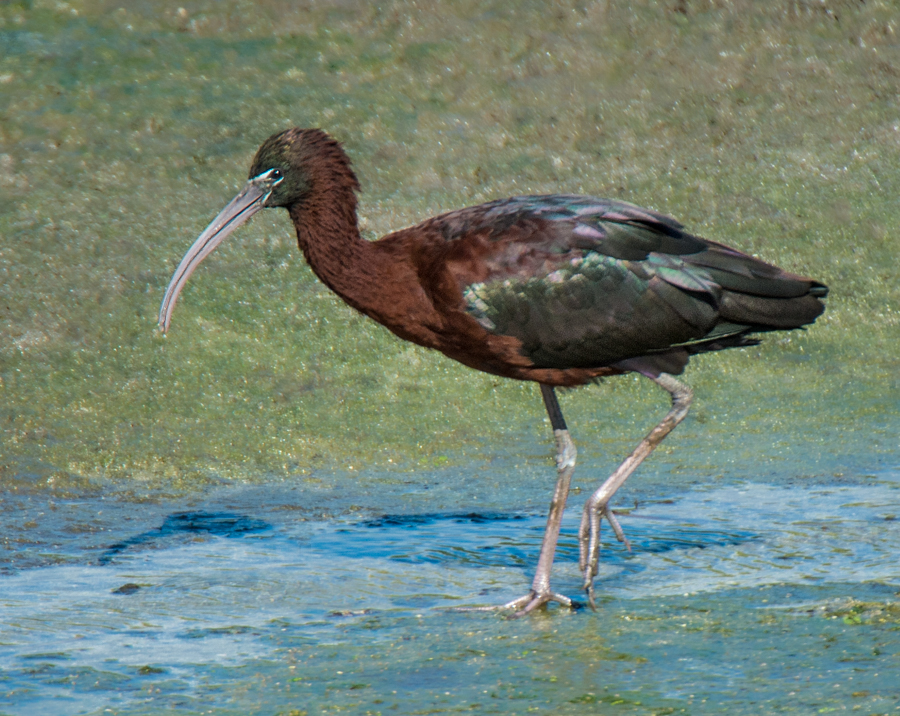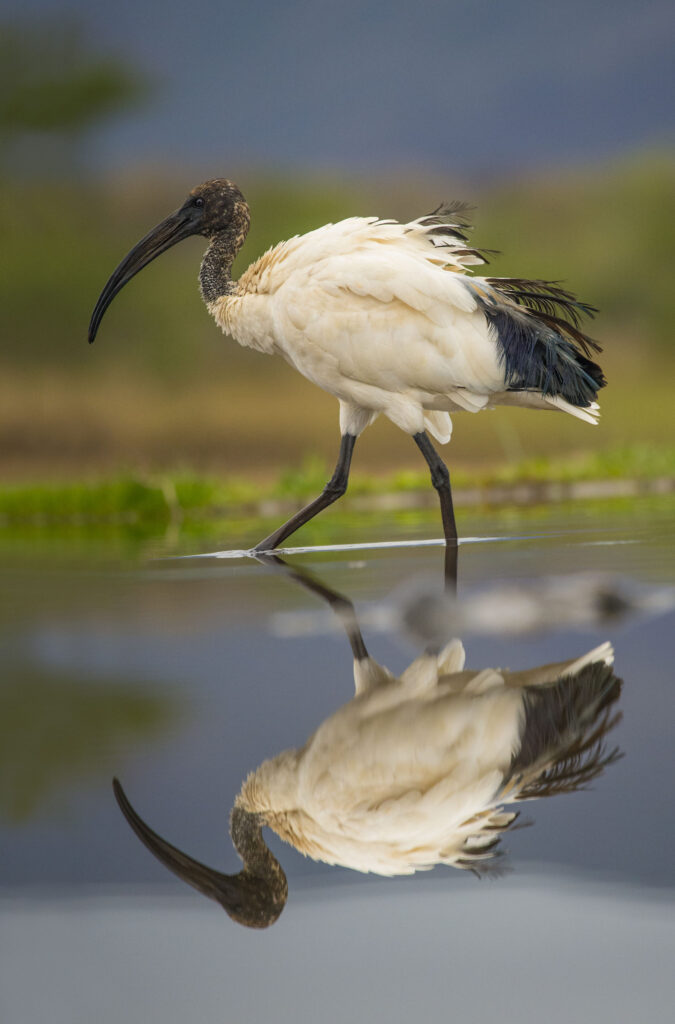Let’s focus on a family of birds that have been revered since ancient times. There are twenty-nine species spread across both the New and Old World, and coincidentally, Owen has twenty-nine photographs of six of those species on his site. We’ll take a closer look at these unique birds, but first, let’s start with some great news.
If you were to look up in the skies around this time of year from a few locations between Austria and Spain, you might be fortunate enough to spot an intriguing spectacle – a microlight held aloft by a bright yellow canopy being dutifully followed by thirty or so long-legged birds, who until recently had been declared extinct in Europe.
Seated at the back of this microlight, calling and waving, are the bird’s “parents,” humans who have raised the birds and are now encouraging them to follow. This unlikely group set off in August as the birds are being guided along on their first migration, and once they arrive in Andalusia in early October, they will be left to their own devices for the rest of their lives.
Northern bald ibises were last seen gracing the open skies of Europe 300 years ago, as hunting and habitat destruction made their breeding efforts unsustainable, and only a handful of birds remained in zoos and private parks. Thanks to the pioneering efforts and dedication of a group of conservationists who have been rearing chicks since 2011, their numbers are now gradually increasing, and they are learning the ways of their ancestors.
Ibises are a remarkable family of wading birds that have intrigued humans for centuries. Known for their long, curved bills and elegant stature, they are found across various continents, inhabiting a range of ecosystems from wetlands to grasslands, each species displaying unique adaptations that make them stand out.

White Ibis
The White Ibis is one of the most recognized and widespread species in the Americas, particularly along the southeastern coast of the United States, the Caribbean, and Central America. With its striking white plumage, vivid red legs, and a matching red bill, the White Ibis is a beautiful sight in the wetlands where it typically resides.
As with many species, one of the most interesting behaviors is its feeding technique. Using their long, curved bill, they probe the mud in search of crustaceans, insects, and small fish. The sensitivity of the bill allows it to feel for prey even when submerged. White Ibises are also known for their social behavior and can be seen foraging in large flocks that can number in the hundreds, a safety-in-numbers strategy to protect against predators and increase their foraging success.
Breeding season is an impressive affair, as nests are built in trees near water in large colonies. Both parents participate in cooperative parenting, incubating the eggs and feeding the chicks, which creates that strong bond that is the glue to this species’ social strength.

Andean Ibis
Venturing into the high altitudes of South America, the Andean Ibis is a species perfectly adapted to the mountainous regions of the Andes, particularly in Peru and Bolivia. This species, also known as the Black-faced Ibis, is notable for its striking contrast of black, grey, and buff/cinnamon plumage, and a distinctive black face that gives it a masked appearance.
The Andean Ibis is an example of adaptation to extreme environments. Restricted to altitudes between 3,000 and 5,000 meters, it thrives in the cold, thin air where few other birds can survive. This ibis species primarily feeds on insects, small amphibians, and other invertebrates, which it finds by probing the soil and under rocks in grasslands and marshes.
Unlike the social White Ibis, the Andean Ibis is more solitary, often found in pairs or small groups. They build their nests on cliffs or in high-altitude grasslands, well-camouflaged from predators. Despite their remote habitat, the Andean Ibis is a species of least concern, thanks to its ability to adapt to harsh environments.

Glossy Ibis
The Glossy Ibis is the most widespread species of the family, found on every continent except Antarctica. What sets this species apart from its cousins is its iridescent plumage, which appears dark at first glance but shimmers with shades of bronze, green, and purple when caught in the right light, a glorious example of structural coloration.
Glossy Ibises are also known for their migratory behavior; most European birds winter in Africa and in North America birds from north of the Carolinas winter farther south. Breeding colonies are large and dense colonies, and this species has no issue mixing with other wading birds in these colonies.
After breeding, they undertake dispersal movements. They are highly nomadic, a trait that has helped boost their numbers and seen them expand their range from southeastern USA to much of eastern North America; European individuals have even been found in Barbados. They are highly resourceful feeders and will forage across a range of environments, including lagoons, floodplains, wet meadows, swamps, reservoirs, sewage ponds, paddies, and irrigated farmland. They are even happy to roost in cities using trees along busy highways if the threat of persecution is absent.

African Sacred Ibis
Easily recognizable with its white body, black head, neck, and tail feathers, and a long, curved black bill, African Sacred ibis can be found across sub-Saharan Africa as well as parts of the Middle East like Iran and Kuwait.
The African Sacred Ibis has a rich history intertwined with ancient Egyptian culture, where it was venerated as a symbol of Thoth, the god of the Moon, wisdom, knowledge, writing, hieroglyphs, science, magic, art, and judgment. That’s some legacy to represent. It is thought that, as thousands of the birds were mummified as a votive offering every year, they were bred on farms to sustain numbers for these crucial sacrifices, an extremely early example of a form of conservation. Sadly, for the time being at least, this species is now extirpated, or locally extinct, in Egypt.
These birds are highly social and often seen in large flocks, and their diet is omnivorous, ranging from insects and small fish to carrion and scraps of human food. The adaptability of the African Sacred Ibis has allowed it to thrive in various environments, though it has also led to conflicts in some areas where it is considered a pest.


